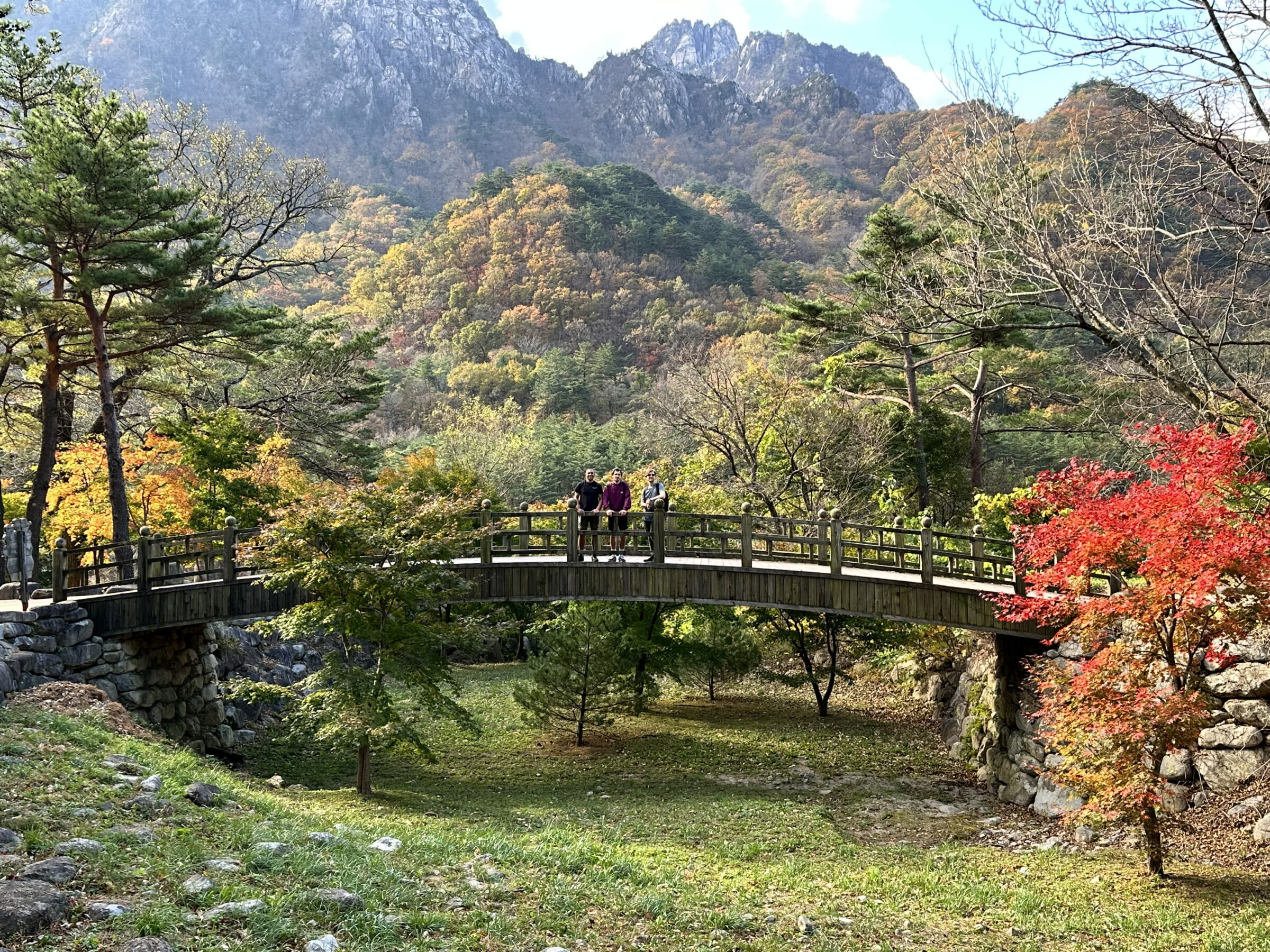The best places to hike in South Korea

Think of South Korea and the chances are you’re more likely to think of skyscrapers and shopping malls than epic hikes and stunning vistas. This little, peninsular nation doesn’t feature on many lists of top destinations for walkers, and its small size and dense population don’t exactly leave much room for wilderness. Or so you might think.
The wilds of South Korea?
OK, so ‘wilderness’ might be pushing it — but that doesn’t mean South Korea doesn’t have some really, really great hiking.
South Korea is roughly 70% mountainous, with most of its population packed into urban centres in the lowlands and on the coast. That leaves mile upon mile of rolling hills and undeveloped, forested mountain range in between. It’s more than enough space to roam, and the views can be truly spectacular — especially in the autumn when the trees turn all shades of red, gold and orange.
One thing to understand from the get-go is that South Korea is not a place to leave the world behind and commune with nature in isolation. South Koreans are extremely enthusiastic ramblers, so you can expect to have plenty of company wherever you go.
That said, you can skip the busiest times if you’re smart about it. Our top tips? Avoid weekends in national parks, and head out as early as possible to hit the best spots for sunrise.
The great benefit of South Korea’s national penchant for hiking is that there are literally thousands of miles of trail — and, because this is South Korea, they’re all flawlessly maintained. Many are paved, with steps and signage, and there are different routes for different levels of ability and enthusiasm. Whether you want to spend a day, a week or an afternoon: there’s something out there for you.

The national parks
Most of South Korea’s best and most beautiful hikes are in its 22 national parks, which encompass thickly forested mountains, the slopes of volcanoes, beach-ringed islands and centuries-old temples.
Closest to Seoul: Bukhansan
If you’re looking for a short trip out of Seoul, the granite peaks and forests of Bukhansan are your best bet (just remember what we said about weekends).
Popular for both hiking and rock climbing, one of its top attractions is Bukhansanseong Fortress, which was first built in 132 AD and reconstructed after the Korean War. The maple trees here are particularly spectacular in autumn.
Tallest mountain: Hallasan
Hallasan national park is named for its volcano — South Korea’s highest peak at 1,947 m (6,388 ft), on Jeju Island. There are seven trails ranging from easy to strenuous, and from 1.5 to 9 kilometres (0.9 to 5.6 miles).
Expect waterfalls, impressive rock formations, a crater lake, and one of the world’s finest lava tube cave systems at this World Heritage Site. Summiting the mountain is a physical challenge, but it’s well worth it.
Oldest & largest: Jirisan
South Korea’s first national park, designated in 1967, Jirisan has the most extensive hiking in the country if you’re planning a multi-day trip. 12 peaks spread over 1,000 metres form a 40 kilometre ridge, which can be hiked in two to three days with overnight stays in mountain shelters.
Best for history & culture: Songnisan
In central South Korea, Songnisan national park is the home of one of the country’s oldest temples: Beopjusa. Built when Korea was known as the Silla Kingdom, it’s one of seven World Heritage monasteries in South Korea, and still operates as a centre of faith and religious practice today.
The park is also known for its dramatic layers of clouds that form in the valleys between its craggy mountains, as well as for its blankets of pink azaleas in spring.
Best for autumn leaves: Seoraksan
Seoraksan covers nearly 2,000 square kilometres along the backbone of the Korean Peninsula, and is renowned as the most beautiful spot in the country for autumn leaves. It’s also technically close enough to Seoul to be visited on a day trip, but with a 3 hour journey to Sokcho and 30 minutes further to the park, we don’t recommend doing it in a day!

Our travel consultants, Lachlan and Jon, recently visited Seoraksan for the autumn leaves. They confirmed that it’s as stunning as they say.
“We started out before the crack of dawn to beat the day trip crowds, hiking in the dark to reach the mountaintop for sunrise. With the first rays of sun illuminating the red-and-gold leaves, and barely a soul about, it was a really special experience. Well worth the 4am start, I promise!” — Jon
If you’re not up to a long or strenuous hike, Seoraksan also has a cablecar that’ll sweep you up to the top of the mountains and the ruins of Gwongeumseong Fortress, from which you get fantastic views as far as the ocean. From here, there are many shorter hikes you can do before getting the cablecar back down.
Seoraksan is also excellent for getting a sense of history, with historic structures at almost every turn on some of the hiking routes. Sinheungsa Temple is only 15 minutes’ walk from the main park entrance, with a giant bronze Buddha and a main hall dating back to the seventh century.
Our Best of South Korea itinerary includes two nights in Seoraksan National Park, but there’s no need to stop there. We can design a hiking-themed trip to suit you, or even link South Korea with some amazing hiking in Japan. Just get in touch with us to start planning your dream trip.



